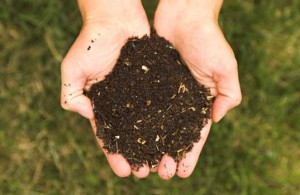By Beth Hanson – organicgardening.com
These nutrient-laden crops are food for the compost pile.
Cultivating crops specifically for composting is a major tenet of intensive gardening methods like biodynamic and biointensive gardening. Practitioners of these approaches devote as much as 60 percent of their plots to plants destined for the compost pile. But these growing methods may be too, well, intensive for many home gardeners. There are plants you can grow with the compost pile in mind, though, that will benefit the pile, the garden, and in some cases your table.
One approach is to grow a perennial legume, such as red clover or alfalfa, around the edges of the garden or between rows, says Marianne Sarrantonio, Ph.D., a professor of sustainable agriculture at the University of Maine at Orono. Cut back the foliage and add to the compost pile when it becomes hard to wade through or is getting bothersome in general. With extensive root systems that “fix” nitrogen (capture nitrogen from the air and stockpile it in root nodules), these legumes can help balance the carbon-to-nitrogen ratio in the compost pile as well as encourage beneficial soil microbes. It’s easy to harvest the clover or alfalfa with a lawn mower but best if done by hand or with a sickle. “It’s extra work, but you’re getting lots of benefit both in place and then on the compost pile,” Sarrantonio says.
[pro_ad_display_adzone id=”110028″]
Sarrantonio also recommends growing the biennial yellow sweet clover in a small plot adjacent to your garden beds. Another nitrogen-fixing legume, sweet clover has roots that can extend 3 feet below ground and leafy tops that reach up to 6 feet tall in good soil. Cut the plants back after they grow a couple of feet and put the nitrogen-rich foliage on the compost pile. Planted in spring, yellow sweet clover will last through the winter and into the following summer, with time for two or three harvests for the compost pile. “I wouldn’t put this in the garden pathways, though, because it grows a little too tall and fast, and could block the sun from the garden,” she says.
In beds that would otherwise be bare through the winter, try planting a winter annual, such as cereal rye, as a cover crop after harvest. The cereal rye will protect the soil over the cold season, and its tremendous root system will grab nutrients that remain in the soil after the growing season. Before planting the following spring, harvest the aboveground, carbon-rich parts of the rye for the compost pile, leaving the nutrient-laden root system in your beds. “Normally I would recommend just tilling a winter cover crop down,” Sarrantonio says, “but don’t turn a grass like cereal rye under, because it will tie up some nitrogen, won’t decompose quickly, and will be in the way of early crops.”
Another doubly beneficial group of winter annuals are the forage brassicas, including kale and daikon, sometimes called forage radish. When seeded more densely than for harvest as a vegetable crop, these deep-rooted crops offer plenty of nutritious leaves for composting, says Sarrantonio. After the tops of the brassicas are harvested for compost, the large taproots die back, leaving wonderful nutrient-rich channels in the soil. These open spaces allow microbial populations to flourish, enhance good drainage, and create a nice structure in the soil. Seeds of cold-tolerant forage kales are often sold in bulk quantities by farm-supply stores, but home gardeners can get the same results from familiar culinary varieties such as ‘Dwarf Siberian’ and ‘Blue Curled Scotch’.
Some compost crops feed both the gardener and the compost pile. Most legumes that are cultivated for their edible beans don’t retain much nitrogen in their leaves and stems after the seeds have fully matured—they have concentrated most of the nitrogen in their seeds. But cowpeas, a subtropical legume species that includes black-eyed peas and red cowpeas, are mostly indeterminate; the plants will flower continuously and leaves will stay green until killed by frost in northern climates. Rather than tilling the plants into the soil in place, the tops can be removed and added to the compost pile, Sarrantonio says. The seeds of another legume, the soybean, can be harvested while green for edamame, while its foliage is still green and full of nitrogen. Throw the soybean plants on the compost pile after harvest.
Comfrey and borage are both dynamic accumulators of nutrients—they have a reputation for accumulating phosphorus and zinc, in particular, says Sarrantonio—and both produce a tremendous amount of aboveground biomass. They grow so fast and so large that you can use them for many purposes, and certainly as a source of compost-pile ingredients.
When planning your garden this spring, make room for plants with a double ben-efit—a hardworking root system or edible seeds in addition to plentiful, carbon- or nitrogen-rich foliage to feed your compost pile.
[pro_ad_display_adzone id=”110027″]







